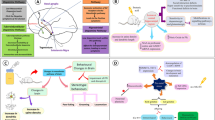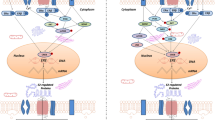Abstract
Several pieces of evidence indicate that elastase-2 (ELA2; chymotrypsin-like ELA2) is an alternative pathway to the generation of angiotensin II (ANGII). Elastase-2 knockout mice (ELA2KO) exhibit alterations in the arterial blood pressure and heart rate. However, there is no data on the behavioral consequences of ELA2 deletion. In this study, we addressed this question, submitting ELA2KO and wild-type (WT) mice to several models sensitive to anxiety- and depression-like, memory, and repetitive behaviors. Our data indicates a higher incidence of barbering behavior in ELA2KO compared to WT, as well as an anxiogenic phenotype, evaluated in the elevated plus maze (EPM). While a decrease in locomotor activity was observed in ELA2KO in EPM, this feature was not the main source of variation in the other parameters analyzed. The marble-burying test (MBT) indicated increase in repetitive behavior, observed by a higher number of buried marbles. The actimeter test indicated a decrease in total activity and confirmed the increase in repetitive behavior. The spatial memory was tested by repeated exposure to the actimeter in a 24-h interval. Both ELA2KO and WT exhibited decreased activity compared to the first exposure, without any distinction between the genotypes. However, when submitted to the cued fear conditioning, ELA2KO displayed lower levels of freezing behavior in the extinction session when compared to WT, but no difference was observed during the conditioning phase. Increased levels of BDNF were found in the prefrontal cortex but not in the hippocampus of ELA2KO mice compared to WT. Finally, in silico analysis indicates that ELA2 is putatively able to cleave BDNF, and incubation of the purified enzyme with BDNF led to the degradation of the latter. Our data suggested an anxiogenic- and antidepressant-like phenotype of ELA2KO, possibly associated with increased levels of BDNF in the prefrontal cortex.



Similar content being viewed by others
References
Santos CF, Caprio MAV, Oliveira EB, Salgado MCO, Schippers DN, Munzenmaier DH, Greene AS (2003) Functional role, cellular source, and tissue distribution of rat elastase-2, an angiotensin II-forming enzyme. Am J Physiol Heart Circ Physiol 285(2):H775–H783. https://doi.org/10.1152/ajpheart.00818.2002
Paula CA, Sousa MV, Salgado MC, Oliveira EB (1998) Purification and substrate specificity of an angiotensin converting elastase-2 from the rat mesenteric arterial bed perfusate. Biochim Biophys Acta 1388(1):227–238. https://doi.org/10.1016/S0167-4838(98)00186-1
MacDonald RJ, Swift GH, Quinto C, Swain W, Pictet RL, Nikovits W, Rutter W (1982) Primary structure of two distinct rat pancreatic preproelastases determined by sequence analysis of the complete cloned messenger ribonucleic acid sequences. Biochemistry 21(6):1453–1463. https://doi.org/10.1021/bi00535a053
Becari C, Teixeira FR, Oliveira EB, Salgado MCO (2011) Angiotensin-converting enzyme inhibition augments the expression of rat elastase-2, an angiotensin II-forming enzyme. Am J Physiol Heart Circ Physiol 301(2):H565–H570. https://doi.org/10.1152/ajpheart.00534.2010
Becari C, Sivieri DO Jr, Santos CF, Moysés MK, Oliveira EB, Salgado MCO (2005) Role of elastase-2 as an angiotensin II-forming enzyme in rat carotid artery. J Cardiovasc Pharmacol 46(4):498–504. https://doi.org/10.1097/01.fjc.0000177982.68563.98
Knuuttila JEA, Törönen P, Castrén E (2004) Effects of antidepressant drug imipramine on gene expression in rat prefrontal cortex. Neurochem Res 29(6):1235–1244. https://doi.org/10.1023/B:NERE.0000023610.89631.d6
Becari C, Oliveira EB, Salgado MCO (2011) Alternative pathways for angiotensin II generation in the cardiovascular system. Braz J Med Biol Res 44(9):914–919. https://doi.org/10.1590/S0100-879X2011007500093
Becari C, Silva MAB, Durand MT, Prado CM, Oliveira EB, Ribeiro MS, Salgado HC, Salgado MCO et al (2017) Elastase-2, an angiotensin II-generating enzyme, contributes to increased angiotensin II in resistance arteries of mice with myocardial infarction. Br J Pharmacol 174(10):1104–1115. https://doi.org/10.1111/bph.13755
Hurt RC, Garrett JC, Keifer OP Jr, Linares A, Couling L, Speth RC, Ressler KJ, Marvar PJ (2015) Angiotensin type 1a receptors on corticotropin-releasing factor neurons contribute to the expression of conditioned fear. Genes Brain Behav 14(7):526–533. https://doi.org/10.1111/gbb.12235
Sakagawa T, Okuyama S, Kawashima N, Hozumi S, Nakagawasai O, Tadano T, Kisara K, Ichiki T et al (2000) Pain threshold, learning and formation of brain edema in mice lacking the angiotensin II type 2 receptor. Life Sci 67(21):2577–2585. https://doi.org/10.1016/S0024-3205(00)00841-9
Okuyama S, Sakagawa T, Chaki S, Imagawa Y, Ichiki T, Inagami T (1999) Anxiety-like behavior in mice lacking the angiotensin II type-2 receptor. Brain Res 821(1):150–159. https://doi.org/10.1016/S0006-8993(99)01098-7
Okuyama S, Sakagawa T, Inagami T (1999) Role of the angiotensin II type-2 receptor in the mouse central nervous system. Jpn J Pharmacol 81(3):259–263. https://doi.org/10.1254/jjp.81.259
Vijayapandi P, Nagappa AN (2005) Biphasic effects of losartan potassium on immobility in mice. Yakugaku Zasshi 125(8):653–657. https://doi.org/10.1248/yakushi.125.653
Martin P, Massol J, Puech AJ (1990) Captopril as an antidepressant? Effects on the learned helplessness paradigm in rats. Biol Psychiatry 27(9):968–974. https://doi.org/10.1016/0006-3223(90)90034-Y
Giardina WJ, Ebert DM (1989) Positive effects of captopril in the behavioral despair swim test. Biol Psychiatry 25(6):697–702. https://doi.org/10.1016/0006-3223(89)90240-0
Germain L, Chouinard G (1988) Treatment of recurrent unipolar major depression with captopril. Biol Psychiatry 23(6):637–641. https://doi.org/10.1016/0006-3223(88)90010-8
Germain L, Chouinard G (1989) Captopril treatment of major depression with serial measurements of blood cortisol concentrations. Biol Psychiatry 25(4):489–493. https://doi.org/10.1016/0006-3223(89)90203-5
Georgiev V, Getova D, Opitz M (1987) Mechanisms of the angiotensin II effects on the exploratory behavior of rats in open field. I. Interaction of angiotensin II with saralasin and catecholaminergic drugs. Methods Find Exp Clin Pharmacol 9(5):297–301
Castrén E, Antila H (2017) Neuronal plasticity and neurotrophic factors in drug responses. Mol Psychiatry 22(8):1085–1095. https://doi.org/10.1038/mp.2017.61
Castrén E, Kojima M (2017) Brain-derived neurotrophic factor in mood disorders and antidepressant treatments. Neurobiol Dis 97(Pt B):119–126. https://doi.org/10.1016/j.nbd.2016.07.010
Becari C, Durand MT, Guimaraes AO et al (2017) Elastase-2, a tissue alternative pathway for angiotensin II generation, plays a role in circulatory sympathovagal balance in mice. Front Physiol 8:170
Merkin J, Russell C, Chen P, Burge CB (2012) Evolutionary dynamics of gene and isoform regulation in mammalian tissues. Science 338(6114):1593–1599. https://doi.org/10.1126/science.1228186
Casarotto PC, Biojone C, Montezuma K et al (2016) Inducible nitric oxide synthase (NOS2) knockout mice as a model of trichotillomania. bioRxiv. https://doi.org/10.1101/086173
Garner JP, Weisker SM, Dufour B, Mench JA (2004) Barbering (fur and whisker trimming) by laboratory mice as a model of human trichotillomania and obsessive-compulsive spectrum disorders. Comp Med 54(2):216–224
Pereira VS, Casarotto PC, Hiroaki-Sato VA, Sartim AG, Guimarães FS, Joca SRL (2013) Antidepressant- and anticompulsive-like effects of purinergic receptor blockade: involvement of nitric oxide. Eur Neuropsychopharmacol 23(12):1769–1778. https://doi.org/10.1016/j.euroneuro.2013.01.008
Njung’e K, Handley SL (1991) Evaluation of marble-burying behavior as a model of anxiety. Pharmacol Biochem Behav 38(1):63–67. https://doi.org/10.1016/0091-3057(91)90590-X
Casarejos MJ, Perucho J, Gomez A, Muñoz MP, Fernandez-Estevez M, Sagredo O, Fernandez Ruiz J, Guzman M et al (2013) Natural cannabinoids improve dopamine neurotransmission and tau and amyloid pathology in a mouse model of tauopathy. J Alzheimers Dis 35(3):525–539. https://doi.org/10.3233/JAD-130050
Karpova NN, Pickenhagen A, Lindholm J, Tiraboschi E, Kulesskaya N, Agústsdóttir A, Antila H, Popova D et al (2011) Fear erasure in mice requires synergy between antidepressant drugs and extinction training. Science 334(6063):1731–1734. https://doi.org/10.1126/science.1214592
Casarotto PC (2017) BDNF cleavage sites by elastase-2a and chymotrypsin. Figshare. doi: https://doi.org/10.6084/m9.figshare.4960157.v2
Porsolt RD, Bertin A, Jalfre M (1977) Behavioral despair in mice: a primary screening test for antidepressants. Arch Int Pharmacodyn Ther 229(2):327–336
Cryan JF, Markou A, Lucki I (2002) Assessing antidepressant activity in rodents: recent developments and future needs. Trends Pharmacol Sci 23(5):238–245. https://doi.org/10.1016/S0165-6147(02)02017-5
Carobrez AP, Bertoglio LJ (2005) Ethological and temporal analyses of anxiety-like behavior: the elevated plus-maze model 20 years on. Neurosci Biobehav Rev 29(8):1193–1205. https://doi.org/10.1016/j.neubiorev.2005.04.017
Thomas A, Burant A, Bui N, Graham D, Yuva-Paylor LA, Paylor R (2009) Marble burying reflects a repetitive and perseverative behavior more than novelty-induced anxiety. Psychopharmacology 204(2):361–373. https://doi.org/10.1007/s00213-009-1466-y
Bekinschtein P, Cammarota M, Medina JH (2014) BDNF and memory processing. Neuropharmacology 76 Pt C:677–683. https://doi.org/10.1016/j.neuropharm.2013.04.024
Saarelainen T, Pussinen R, Koponen E, Alhonen L, Wong G, Sirviö J, Castrén E (2000) Transgenic mice overexpressing truncated trkB neurotrophin receptors in neurons have impaired long-term spatial memory but normal hippocampal LTP. Synapse 38(1):102–104. https://doi.org/10.1002/1098-2396(200010)38:1<102::AID-SYN11>3.0.CO;2-K
Saarelainen T, Hendolin P, Lucas G, Koponen E, Sairanen M, MacDonald E, Agerman K, Haapasalo A et al (2003) Activation of the TrkB neurotrophin receptor is induced by antidepressant drugs and is required for antidepressant-induced behavioral effects. J Neurosci 23(1):349–357
Govindarajan A, Rao BSS, Nair D, Trinh M, Mawjee N, Tonegawa S, Chattarji S (2006) Transgenic brain-derived neurotrophic factor expression causes both anxiogenic and antidepressant effects. Proc Natl Acad Sci U S A 103(35):13208–13213. https://doi.org/10.1073/pnas.0605180103
Maya Vetencourt JF, Sale A, Viegi A et al (2008) The antidepressant fluoxetine restores plasticity in the adult visual cortex. Science 320(5874):385–388. https://doi.org/10.1126/science.1150516
Park H, Poo M-M (2013) Neurotrophin regulation of neural circuit development and function. Nat Rev Neurosci 14(1):7–23. https://doi.org/10.1038/nrn3379
Peters J, Dieppa-Perea LM, Melendez LM, Quirk GJ (2010) Induction of fear extinction with hippocampal-infralimbic BDNF. Science 328(5983):1288–1290. https://doi.org/10.1126/science.1186909
Choi DC, Maguschak KA, Ye K, Jang SW, Myers KM, Ressler KJ (2010) Prelimbic cortical BDNF is required for memory of learned fear but not extinction or innate fear. Proc Natl Acad Sci U S A 107(6):2675–2680. https://doi.org/10.1073/pnas.0909359107
Aid T, Kazantseva A, Piirsoo M, Palm K, Timmusk T (2007) Mouse and rat BDNF gene structure and expression revisited. J Neurosci Res 85(3):525–535. https://doi.org/10.1002/jnr.21139
Bushell TJ, Plevin R, Cobb S, Irving AJ (2006) Characterization of proteinase-activated receptor 2 signalling and expression in rat hippocampal neurons and astrocytes. Neuropharmacology 50(6):714–725. https://doi.org/10.1016/j.neuropharm.2005.11.024
Cottrell GS (2013) Roles of proteolysis in regulation of GPCR function. Br J Pharmacol 168(3):576–590. https://doi.org/10.1111/j.1476-5381.2012.02234.x
Demaude J, Levêque M, Chaumaz G, Eutamène H, Fioramonti J, Bueno L, Ferrier L (2009) Acute stress increases colonic paracellular permeability in mice through a mast cell-independent mechanism: involvement of pancreatic trypsin. Life Sci 84(23-24):847–852. https://doi.org/10.1016/j.lfs.2009.03.016
Jacob C, Yang P-C, Darmoul D, Amadesi S, Saito T, Cottrell GS, Coelho AM, Singh P et al (2005) Mast cell tryptase controls paracellular permeability of the intestine. Role of protease-activated receptor 2 and beta-arrestins. J Biol Chem 280(36):31936–31948. https://doi.org/10.1074/jbc.M506338200
Smith-Swintosky VL, Cheo-Isaacs CT, D’Andrea MR et al (1997) Protease-activated receptor-2 (PAR-2) is present in the rat hippocampus and is associated with neurodegeneration. J Neurochem 69(5):1890–1896
Dinkel K, Dhabhar FS, Sapolsky RM (2004) Neurotoxic effects of polymorphonuclear granulocytes on hippocampal primary cultures. Proc Natl Acad Sci U S A 101(1):331–336. https://doi.org/10.1073/pnas.0303510101
Bekaroğlu M, Değer O, Karahan SC, Bilici M, Soylu C, Örem A (2000) Effects of antidepressant treatments on polymorphonuclear elastase levels in patients with depression. J Affect Disord 59(3):175–182. https://doi.org/10.1016/S0165-0327(99)00117-2
Popoli M, Yan Z, McEwen BS, Sanacora G (2011) The stressed synapse: the impact of stress and glucocorticoids on glutamate transmission. Nat Rev Neurosci 13(1):22–37. https://doi.org/10.1038/nrn3138
Musazzi L, Tornese P, Sala N, Popoli M (2016) Acute stress is not acute: sustained enhancement of glutamate release after acute stress involves readily releasable pool size and synapsin I activation. Mol Psychiatry 22(9):1226–1227. https://doi.org/10.1038/mp.2016.175
Diniz CRAF, Casarotto PC, Joca SRL (2016) NMDA-NO signaling in the dorsal and ventral hippocampus time-dependently modulates the behavioral responses to forced swimming stress. Behav Brain Res 307:126–136. https://doi.org/10.1016/j.bbr.2016.03.037
Padovan CM, Guimarães FS (2004) Antidepressant-like effects of NMDA-receptor antagonist injected into the dorsal hippocampus of rats. Pharmacol Biochem Behav 77(1):15–19. https://doi.org/10.1016/j.pbb.2003.09.015
Acknowledgements
We thank Flávia Salata (USP), Sulo Kolehmainen (UH), and Outi Nikkila (UH) for their technical support and Prof. Eduardo Brandt de Oliveira (Department of Biochemistry, Ribeirão Preto Medical School, USP) for his insightful comments.
Funding
This study was supported by grants from Fundação de Amparo à Pesquisa do Estado de São Paulo—Fapesp (no. 2012/17626-2), Conselho Nacional de Desenvolvimento Científico e Tecnológico—CNPq (no. 471382/2011-6), and European Research Council (iPlasticity, no. 322742); none of the mentioned agencies had any role on experimental design, data analysis, or the preparation and submission of the present manuscript.
Author information
Authors and Affiliations
Corresponding author
Ethics declarations
Conflict of Interest
The authors declare that they have no conflict of interest.
Rights and permissions
About this article
Cite this article
Diniz, C.R.A.F., Becari, C., Lesnikova, A. et al. Elastase-2 Knockout Mice Display Anxiogenic- and Antidepressant-Like Phenotype: Putative Role for BDNF Metabolism in Prefrontal Cortex. Mol Neurobiol 55, 7062–7071 (2018). https://doi.org/10.1007/s12035-018-0902-6
Received:
Accepted:
Published:
Issue Date:
DOI: https://doi.org/10.1007/s12035-018-0902-6




